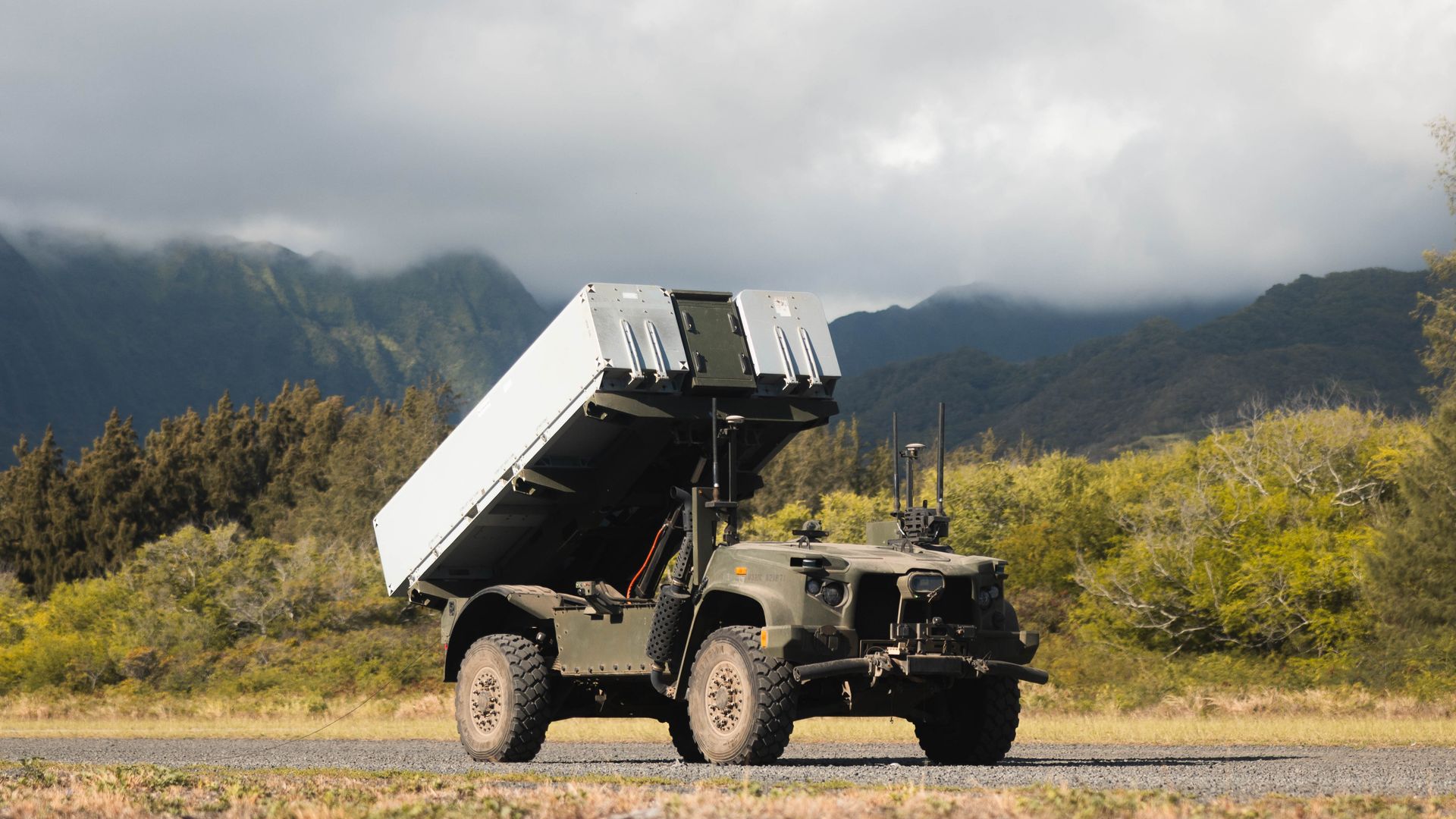The U.S. Marine Corps is cutting its Tomahawk missile program, opting instead for a more nimble solution: the Navy-Marine Corps Expeditionary Ship Interdiction System, or NMESIS. The abrupt shift comes after the Corps determined its Long Range Fires (LRF) launchers, designed to fire Tomahawk cruise missiles, couldn’t operate effectively in the expeditionary and littoral environments that define the Pacific theater.
According to the newly released FY2026 budget documents, “the Marine Corps has concluded that the LRF system was not able to be employed in austere, expeditionary, littoral environments and has made the decision to terminate the program.”
Trading Tomahawks for NMESIS
The original plan was to field 56 LRF launchers equipped with a mix of Tomahawk Land Attack Missiles (TLAM) and Maritime Strike Tomahawks (MST). After activating the first LRF battery at Camp Pendleton in 2023, though, the program is now being shelved. The few existing launchers will be removed from service, with the Tomahawks transferred to the Navy and Army.
Instead, the Corps is investing heavily in NMESIS — a mobile, ground-based anti-ship missile system which pairs Naval Strike Missiles (NSMs) with the ROGUE-Fires autonomous vehicle from Oshkosh Defense. NMESIS is better suited to the Corps’ Force Design concept: small, mobile units operating from island choke points to deny adversaries (i.e. China) maritime access.
Each NMESIS launcher can fire two NSMs. They are stealthy, sea-skimming weapons built by Kongsberg and are already used by the Navy. The system was first deployed operationally in April during Balikatan 2025, a major joint exercise with Philippine forces. Six launchers were already delivered, and the Marine Corps plans to field 48 total systems by March 2026.
Not your ‘normal’ NMESIS
For FY2026, the Corps is requesting nearly $222 million for additional NMESIS procurement, after a one-year pause in buying new units. That includes funding to begin production on 36 upgraded Block II launchers with enhanced targeting capabilities and possibly extended missile range. Deliveries of the new variant are expected to begin in 2028.
The Block II NMESIS will be a little more expensive than previous versions. Budget documents cite “engineering change proposals (ECPs) for increased capabilities” as the reason for the increased per-unit cost. Though many of the upgrades are classified, potential improvements include M-Code GPS integration and software enhancements for controlling multiple launchers simultaneously.
The Corps is also pursuing a longer-range variant of the Naval Strike Missile. In FY2025, engineers finished designs for a more energy-dense fuel and started modifying flight profiles to improve range and efficiency. Flight testing is expected to start in FY2026.
More funding for HIMARS
In addition to NMESIS, the Marine Corps is requesting nearly $14.5 million for a new fire control system to support its fleet of High Mobility Artillery Rocket Systems (HIMARS) and over $500 million to procure extended-range Guided Multiple Launch Rocket Systems (ER GMLRS). These systems could eventually be configured for anti-ship operations, extending the Corps’ maritime strike toolkit even further.
Despite cutting the Tomahawk launcher program, the Marine Corps appears to be reinforcing its commitment to precision long-range fires tailored for distributed operations in the Indo-Pacific. The emphasis now is on speed, survivability and interoperability with allied forces in the region.
By shifting its investments toward NMESIS and away from the Tomahawk-based LRF, the Marine Corps is signaling a clear preference for lighter, faster and more flexible strike options.
The USMC’s total budget request for FY2026 is $57.2 billion, which is part of the Department of the Navy’s overall budget request of $292.2 billion.
